Barbell Bent-Over Row Vs T-Bar Row
Which Builds A Thicker & Wider Back?
Welcome to another installment in the VERSUS series! In this article, we’ll be comparing the tried-and-true Barbell Bent-Over row with the old-school T-Bar Row in terms of building a nice thick wide back!
Now, while both exercises are amazing compound movements to include in your back workouts, they constitute a very similar pulling pattern, which means including them both into the same workout is probably redundant. So if you only had to choose one, which one would it be and why?
First of all, let’s take a brief look at the anatomy of the back. The biggest muscle in the back is the latissimus dorsi (or lats for short). The lats originate in the lower spine and insert all the way up in the humerus (upper arm bone). Most people, in their mind, have linked lat training & growth to vertical pulling movements such as Pull-Ups and Pulldowns, and in the same way they’ve linked mid-back growth and thickness to rowing movements. To take it a step further, people usually equate training for back width to vertical pulling movements and training for back thickness to rowing movements, which couldn’t be further from the truth.
The truth of the matter is that proper rowing, utilizing exercises such as the T-Bar Row or the Bent-Over Row can build both the thickness and width of the back depending on your actual form. There are slight adjustments you can make to either exercise to target your lats or your upper back (traps, rhomboids, rear delts) and we’ll take an in-depth look at those adjustments shortly.
Key Components For Barbell Bent-Over Rows
The Bent-Over Row can be performed several different ways but the best way to target your lats (upper and lower) is to use an UNDERHAND GRIP. An underhand grip will activate a bit more biceps as a secondary muscle group, but will take the majority of the upper back muscles out of the equation. Additionally you will be much stronger with an underhand grip and you will be able to move more weight. Moving more weight means more overload for the lats, and consequently, more growth in the long run.
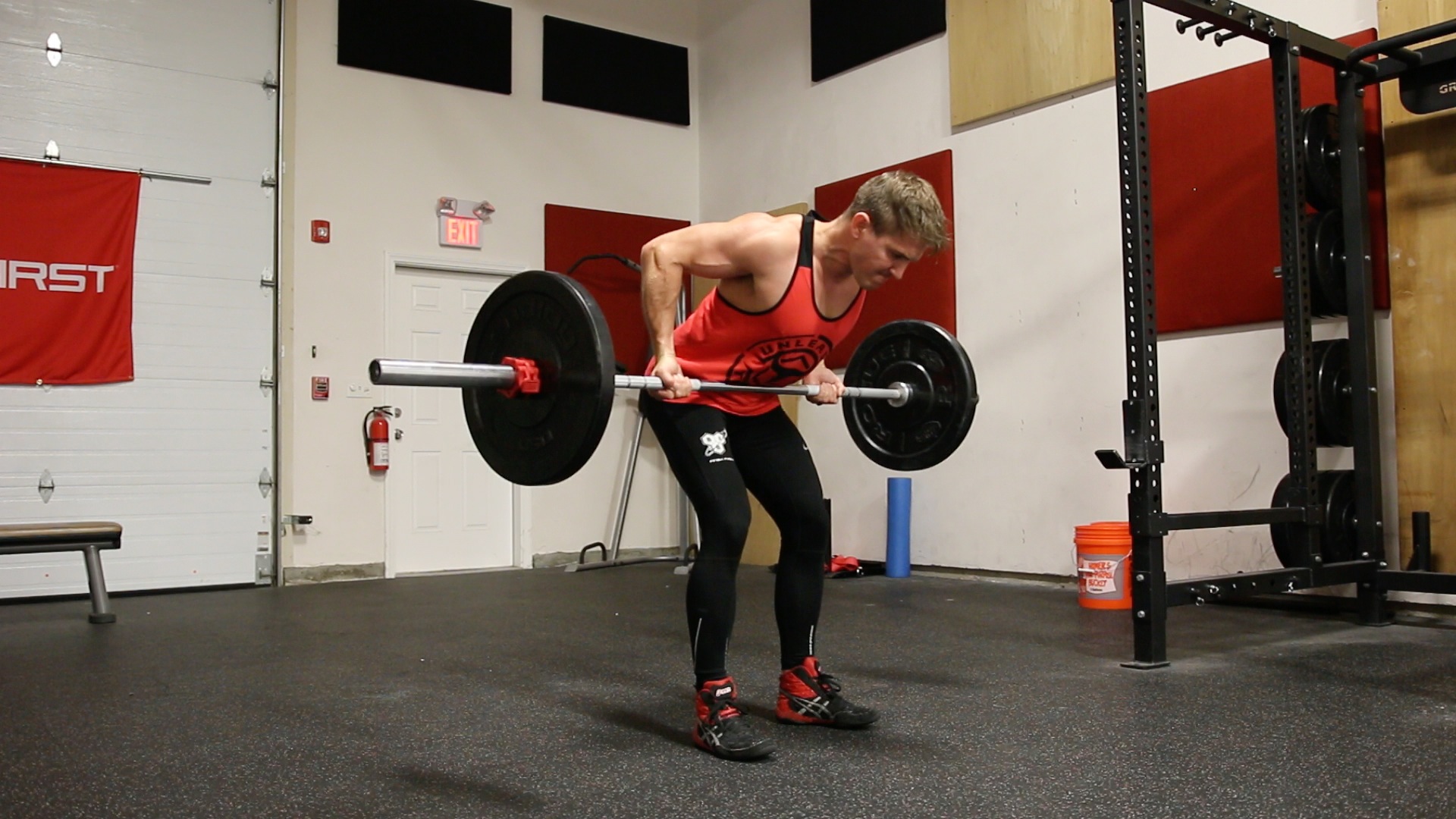
How Do I Properly Perform Barbell Bent-Over Rows?
The most important aspect of this exercise is going to be the set-up, before you even touch the barbell. This will make or break how much weight you can lift when doing this movement. You’ll see a lot of people in the gym when they go to approach the barbell for the Bent-Over Row, is they stand pretty stiff with only a slight bend in their knees. They then bend over without pushing their hips back. What you’ll quickly notice is, if you’re bent over like that, with your chest basically over your toes, you start to feel a lot of fatigue throughout your lower back EXTREMELY fast, especially if you’re using heavier weight.
So the most important thing to keep in mind when doing this exercise, no matter what variation you’re doing, you have to site BETWEEN your legs. That means slightly pushing your hips back as you bend over, and if you want to think about it mentally, think that your chest should be in line with your feet, not over them. There’s a big difference between sitting and NOT sitting between your legs when rowing. Sitting in-between your legs makes you a lot more stable, help you lift more weight, and you’ll be able to handle a lot more repetitions.
To perform the movement with the actual barbell, you’re not going to go overhand, because like I said earlier, the goal isn’t to target the upper back. So instead you’ll use an underhand grip, holding the barbell just outside of shoulder width so that you have plenty of room to stand with your legs far apart. If you stand too close, your hands will get in the way of your legs, obviously.
Once in place, you’ll sit back, lower the barbell as low as you can, getting a nice deep stretch through your lats. On every single repetition, you’re going to pull the weight into your belly button, then come back down to that deep stretch position, and repeat for reps. Make sure you use strict form, not using momentum by pushing through your feet or swinging back and forth. You’re just using your arms to complete the movement, and make sure when you pull to the top that you get a nice tight squeeze in your back, and actually feel your lats engaging on every single repetition.

Why Is An Underhand Grip Important?
The underhand grip Bent-Over Row will enable you to better target the lower lats because the bar travels closer to your hips and you are pulling it towards your belly button. The overhand grip variation of the exercise is also very effective but it’s a lot different too. It will still target your lats but it will focus more on the upper lats and it will also heavily activate the upper back muscles namely the rear delts, the traps and the rhomboids. So choose the right variation that goes best with the rest of your workout. For example, if you’re starting your workout with Weighted Chin-Ups, which we know target the lower lats, you might want to use an overhand grip when you move on to the Barbell Bent-Over Row. Be smart about your training!
The Yates Row
Finally, there is a 3rd variation for the Barbell Row and it is called a Yates Row. The Yates Row (Dorian Yates) is practically a Bent-Over Barbell Row, without the bending-over component. So your torso will be almost upright (20-30 degrees bend) and this way you’ll be able to handle MUCH heavier weights since you won’t be limited by your posterior chain strength. However, this exercise is much closer to an Upright Row, since it will mainly target your upper back, rather than your lats. So again, if you want to target your lats with any variation of the Bent-Over Row, be sure to bend over as much as possible, ideally until you’re parallel to the floor.
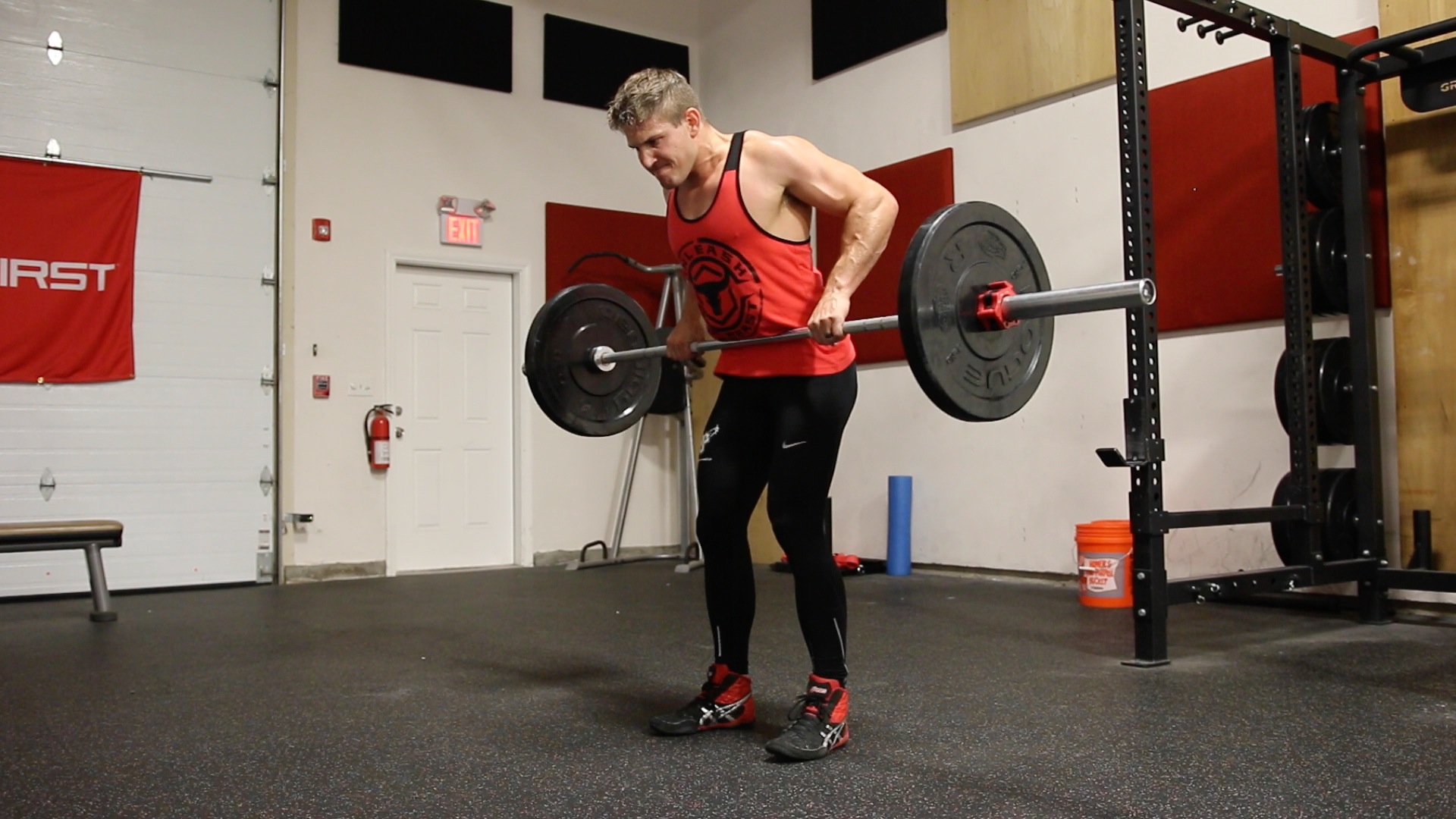
How Do I Properly Perform T-Bar Rows?
To set up for the T-Bar row, you’re going to be using basically the same form mechanics as you did for the barbell Bent-Over-Row, but this time you’ll need a V-Bar attachment to pull the weight to your torso. One thing I should have mentioned is that whenever you’re doing rowing movements like these, you always want to be as parallel to the floor as possible with your chest. You don’t want to be doing either movement while standing too upright, because this will mean you’re reducing the range of motion (ROM) and getting less muscle activation.
One difference with the T-Bar row is that you should have a slightly wider stance with your feet, mainly because you’re straddling the barbell. Aside from that, it’s very similar in terms of sitting back between your legs, not having your chest go past your toes, and again, you’re trying to hit your lats as hard as possible. So when you pull the barbell up, you need to pull it into your belly button as much as you can – don’t go pulling it into your chest, because that will activate more upper back and rear delts.
Step forward up the barbell towards the plates if you need to, then once in position, grab your attachment with your palms facing in, a nice tight grip, and pull the weight into your torso as much as you can. Return to the bottom position so that you get a nice deep stretch in your lats, and then repeat for repetitions until you complete your entire set.
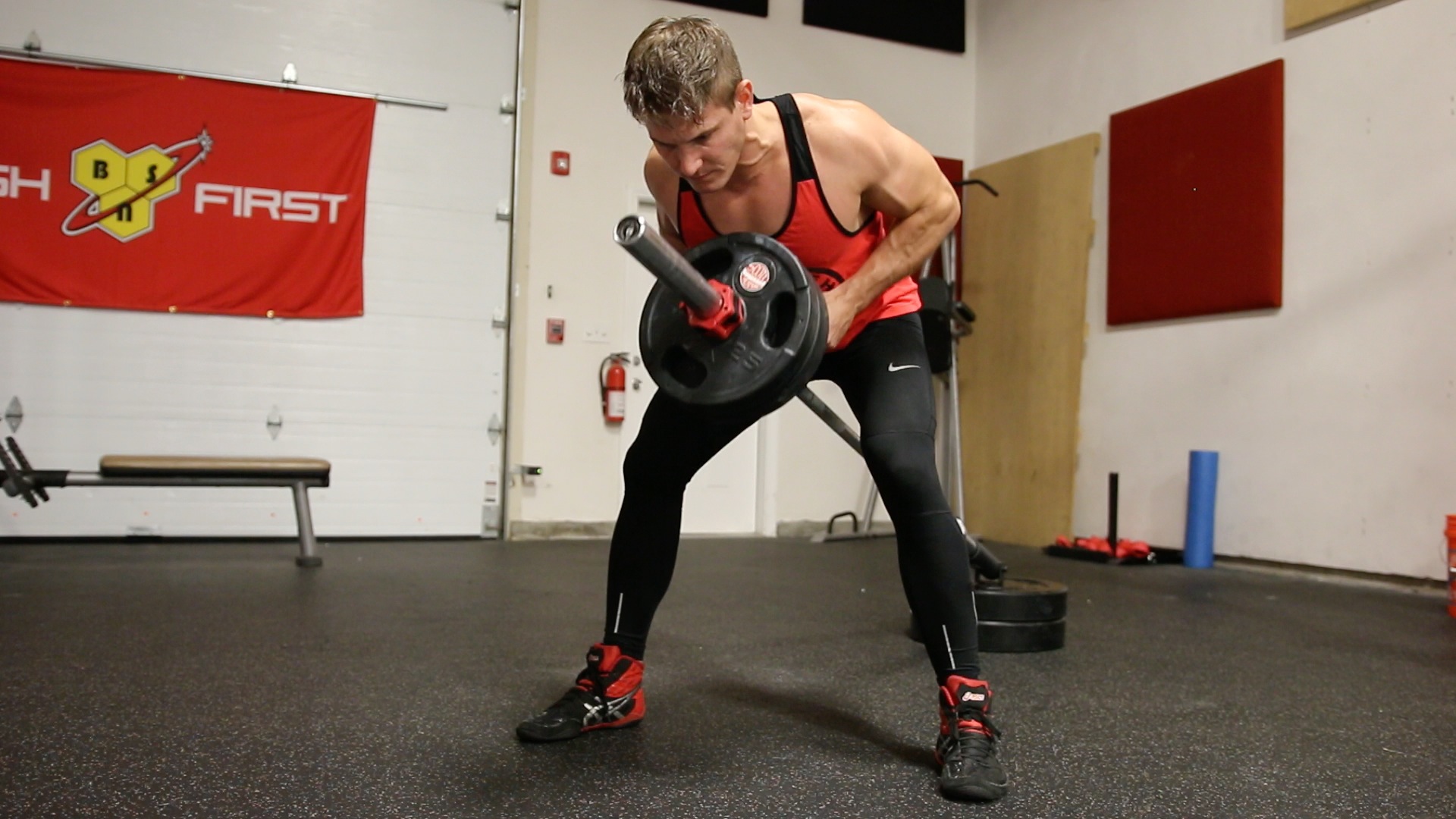
What Is Important About The V-Bar Attachment?
One thing you should know about the V-Bar attachment is that because your hands are in a neutral position, you’ll always be able to lift more weight when performing this exercise, as this is the strongest position when performing a row. Also keep in mind you’ll have more freedom with the ROM for this movement – the deciding factor for which part of your back is being targeted will be where you pull the bar. To target more of your lower lats, pull the weight towards your belly button and lower abs and to target more of your upper lats and mid-back, row towards your upper abs and chest.
Instead of using 45lbs plates, use 25lbs plates which are smaller in diameter. This will allow for a much greater ROM because with the 45s your ROM ends as soon as the plates touche your torso. By using the 25lbs plate you’ll be adding 2-3 inches to the ROM which is a great deal. Every small detail like this counts especially when you are a natural lifter.
Comparison: Key Arguments
Now that we know how to properly and safely execute both exercises, let’s move on to some key differences which will ultimately help us decide which one is more advantageous to include into our back workouts.
- Muscle Activation & Versatility
Depending on which muscle you’re specifically trying to target, both exercises will get you there. The difference is that you have a lot more options when it comes to the Bent-Over Row. You can use either an underhand or overhand grip, as well as a narrow, medium or wide grip which will all affect the muscles targeted. In fact, you can switch between grips very easily and you can even perform some sets one way and the rest of your sets the other way. This makes the Bent-Over Row a more versatile exercise to add into your workout routine.
- Equipment Needed
This is a very obvious difference but aside from the barbell that is required for both exercises, you also need a V-Bar handle for the T-Bar Row as well as a way to anchor the barbell to something stable. A lot of gyms have a proper T-Bar Row set-up with one end of the bar fixed to the ground but you can also just use a corner of the gym and place 1-2 heavy plates on top of the bar to make sure it doesn’t lift. Having said that, the Bent-Over Row is far simpler when it comes to equipment, so it wins this point as well.
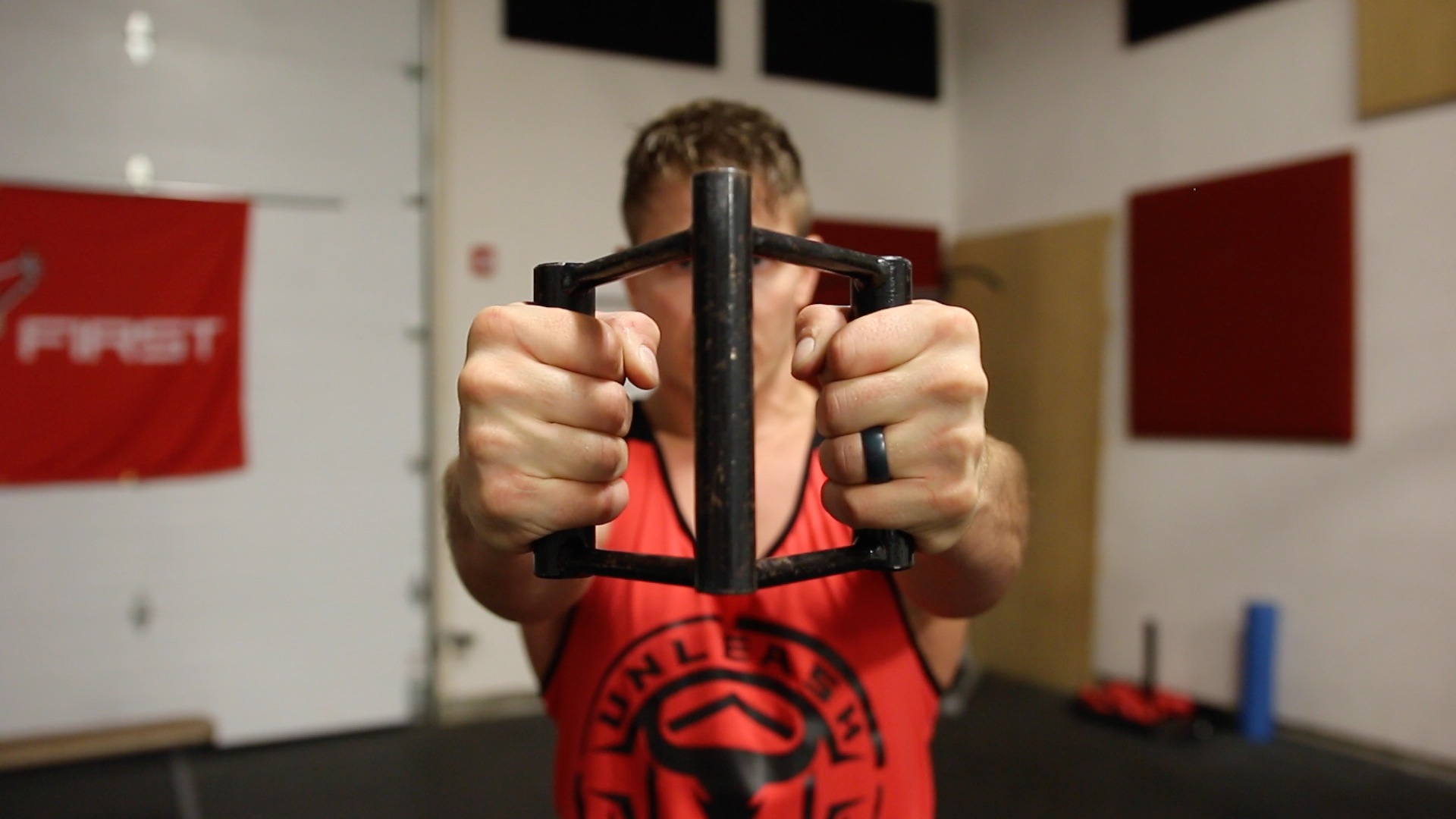
- Lower Back/Posterior Chain Strength Requirements
We know that the back muscles are very powerful, and to properly train them into growing, we need to overload them with a lot of weight. The problem with the Bent-Over Row though, is that the maximum amount of weight you’ll be able to move is limited by your lower back and leg strength (glutes, hamstrings), and this is because the weight is actually in front of your body when you bend over and start pulling. With the T-Bar Row however, the barbell starts behind you and the weight is directly underneath your center which means you’ll be able to move more weight without your lower back becoming an issue. Additionally, the neutral grip that the T-Bar Row offers will allow for a far greater lat and upper back stretch at the bottom of the movement and if we consider how important the weighted stretch is for growing the back, this makes for a very compelling point to pick the T-Bar Row out of the two.
- Range Of Motion (ROM)
Whether you use 25lbs or 45lbs plates, the ROM for the T-Bar Row will be slightly shorter than the Bent-Over Row. The Bent-Over Row stops when the bar hits your torso but the T-Bar stops as soon as the plates hit your torso which results in a smaller ROM.
Final Verdict
Wow, this is tough. It’s actually almost impossible to pick one out of the two. Both exercises are amazing compound movements and you really can’t go wrong whichever one you end up choosing. While the Barbell Bent-Over Row is more versatile, offers a bit more range of motion and is simpler to perform, I will have to go with the T-Bar Row because of its overloading potential.
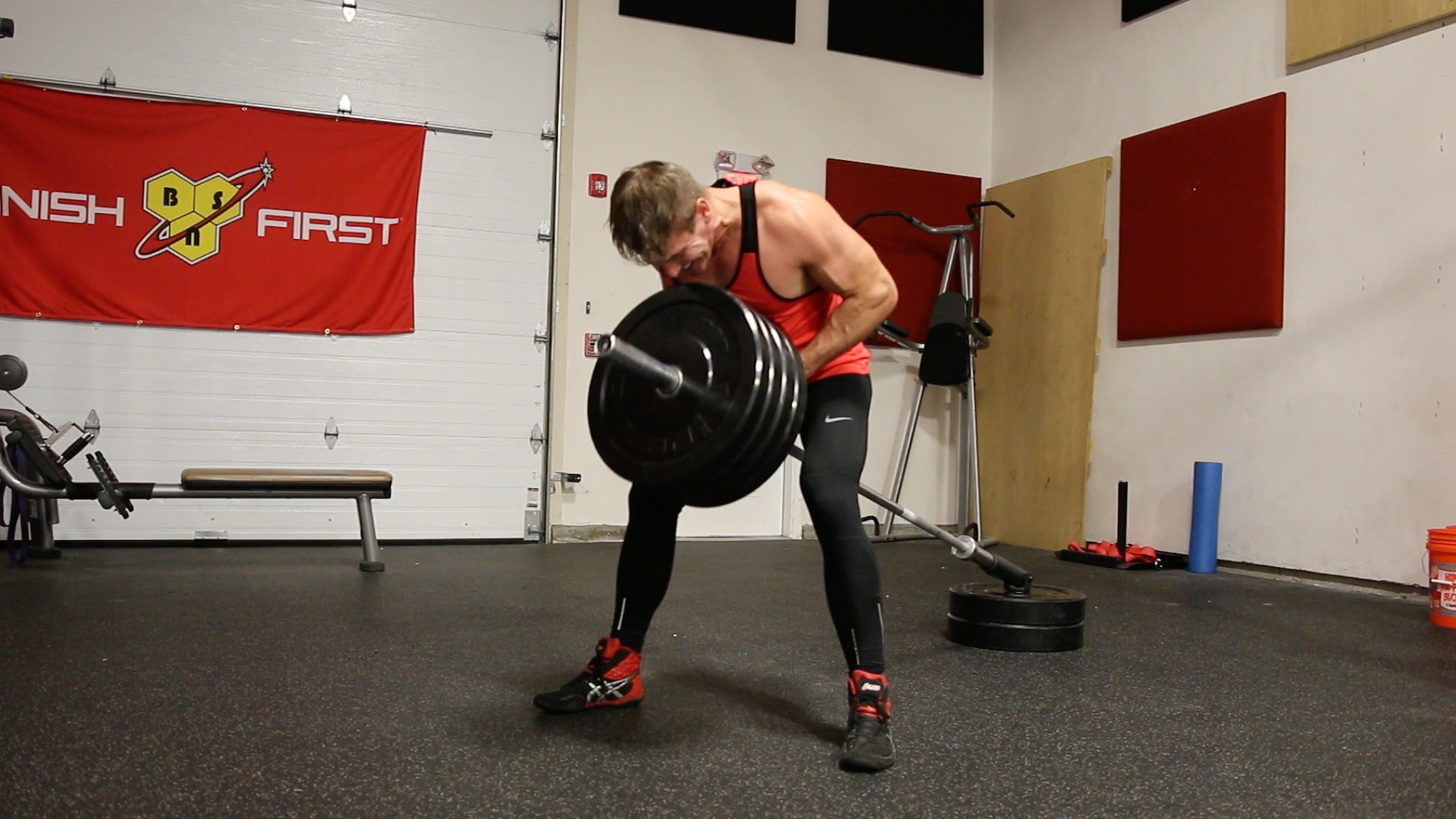
Overloading your muscles with heavy weights is vital to getting them to adapt and grow and the T-Bar Row will do just that. You’ll be able to lift more weight without compromising your lower back and the maximum weight you’ll be able to move won’t be dependent on your posterior chain strength. It will also provide an amazing weighted stretch at the bottom of the ROM and it can still be performed either upright (to target the upper back) or completely bent-over (to target the lats).
Lastly, if you are utilizing my CHEAT & RECOVER method of training, the T-Bar Row will allow you to be explosive, concentrically CHEAT the weight up by using your quads and leg drive, and the narrow grip will provide a huge stretch for your traps and lats. After that, it’s easy to peel off a few plates and move on to the RECOVER part of the set by utilizing perfect form on both the concentric and eccentric.
Conclusion
There you guys have it! If you’re looking to create a badass back workout, I highly recommend you pick the T-Bar Row for either the first or second exercise of the routine. If you don’t have a way to perform T-Bar Rows, however, the Barbell Bent-Over Row is an excellent substitute and if used properly isn’t really that much inferior to the T-Bar Row. Having said that, as natural lifters, we are trying to maximize our results, and the way to maximize your pulling strength and back development is by performing heavy T-Bar Rows.








